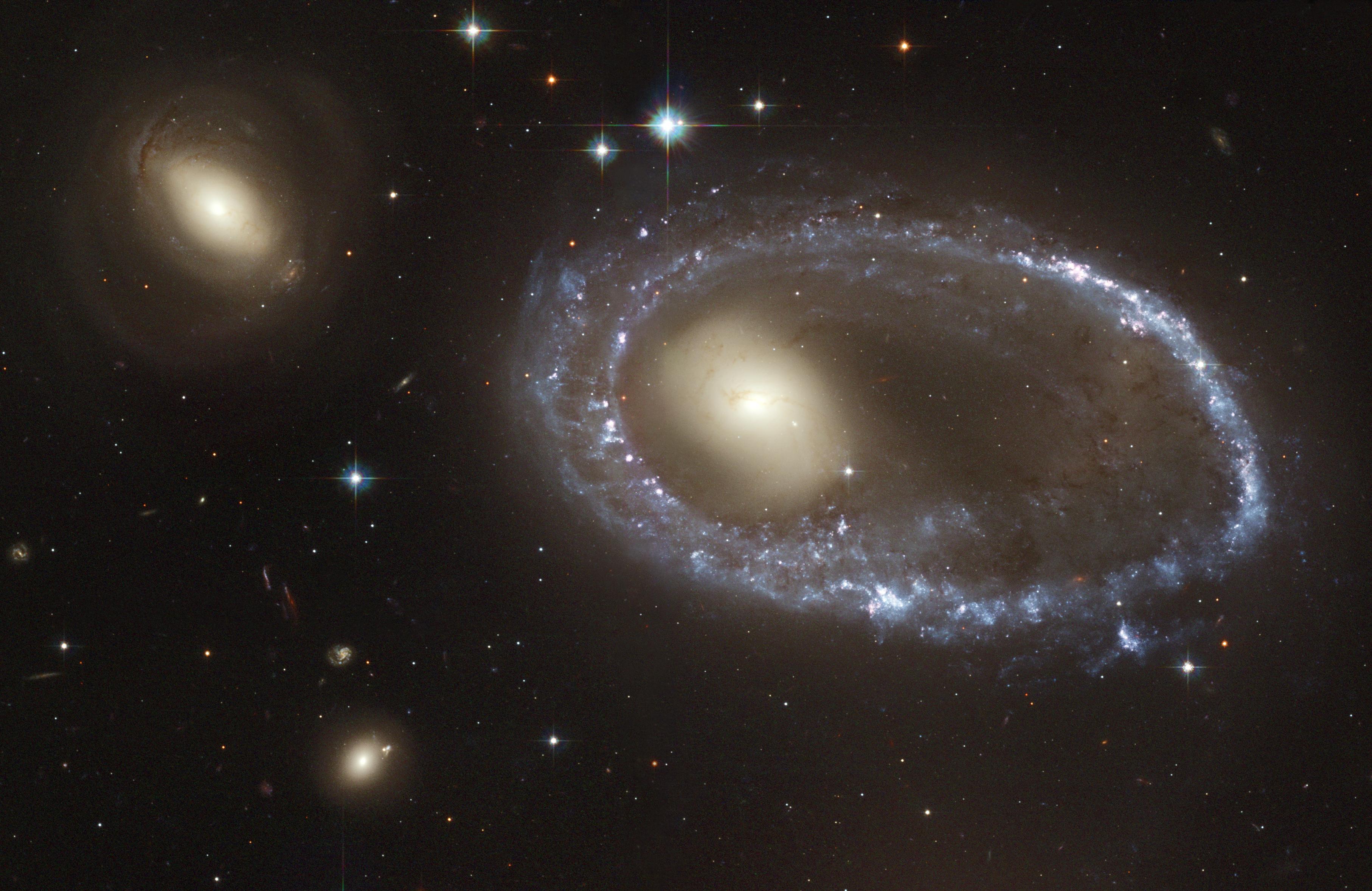
Galaxy AM 0644-741
Ring galaxies arise from a collision in which one galaxy plunges directly through the disk of another one. Seen here is galaxy AM 0644-741, located approximately 300 million light-years away in the southern constellation Volans. Its prominent ring is the result of a hit-and-run event by a celestial neighbor. The spiral galaxy visible to the left of AM 0644-741 is not the culprit, as it is actually a background galaxy that is not interacting with the ring galaxy at all. The true perpetrator has been identified by astronomers, but is outside the field of view of this image. The gravitational shock imparted by a collision of this kind drastically changes the orbits of stars and gas in the "target" galaxy's disk, causing them to rush outward. As the ring plows outward into its surroundings, gas clouds collide and are compressed. The clouds can then contract under their own gravity, collapse, and form an abundance of new stars. The rampant star formation explains why the ring here is so blue: It is continuously forming massive, young, hot stars, which are blue in color. Associated with them are the pink regions visible along the ring. These are rarefied clouds of glowing hydrogen gas, fluorescing because of the strong ultraviolet light from the newly formed massive stars. For more information, visit: hubblesite.org/image/1520/news_release/2004-15
